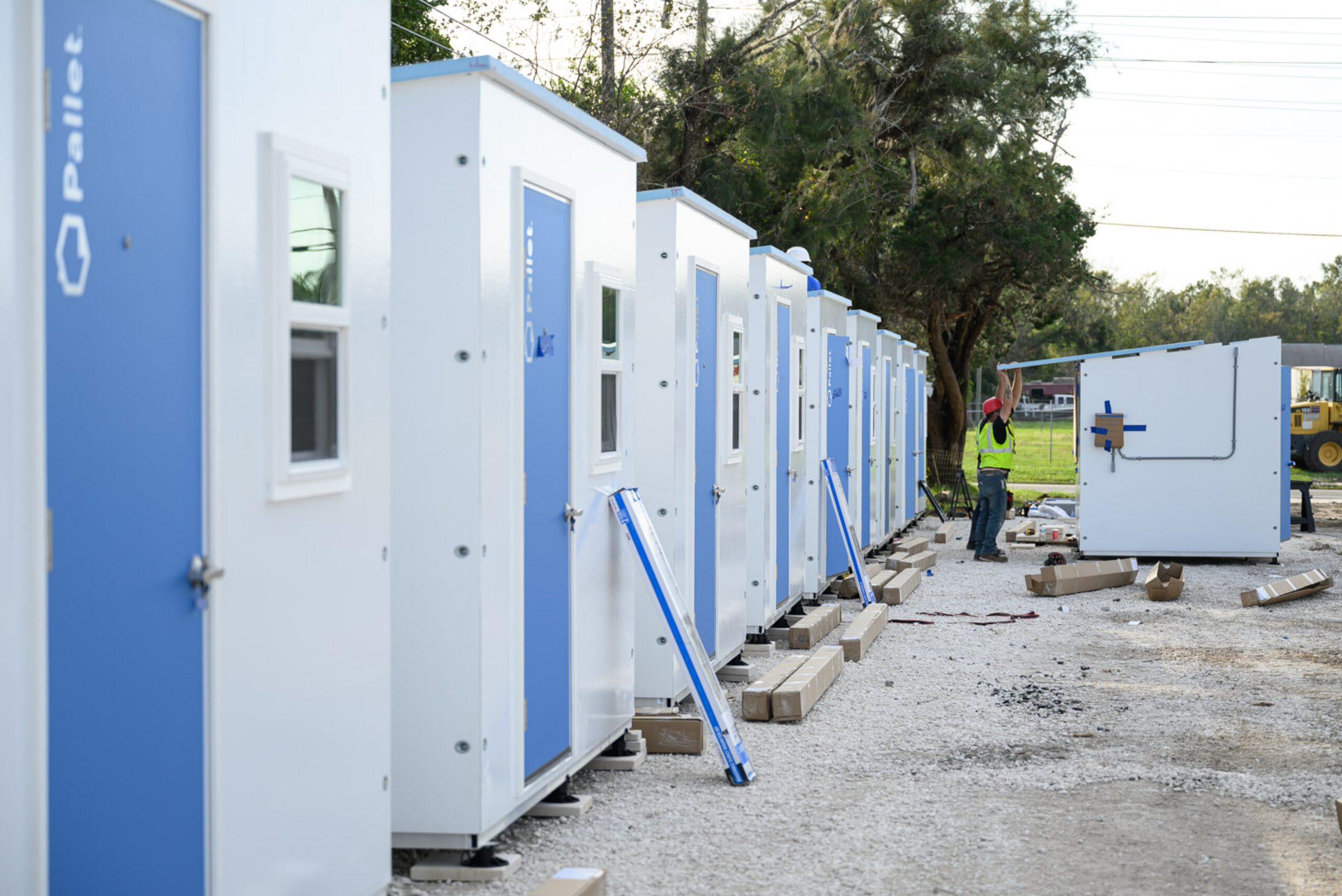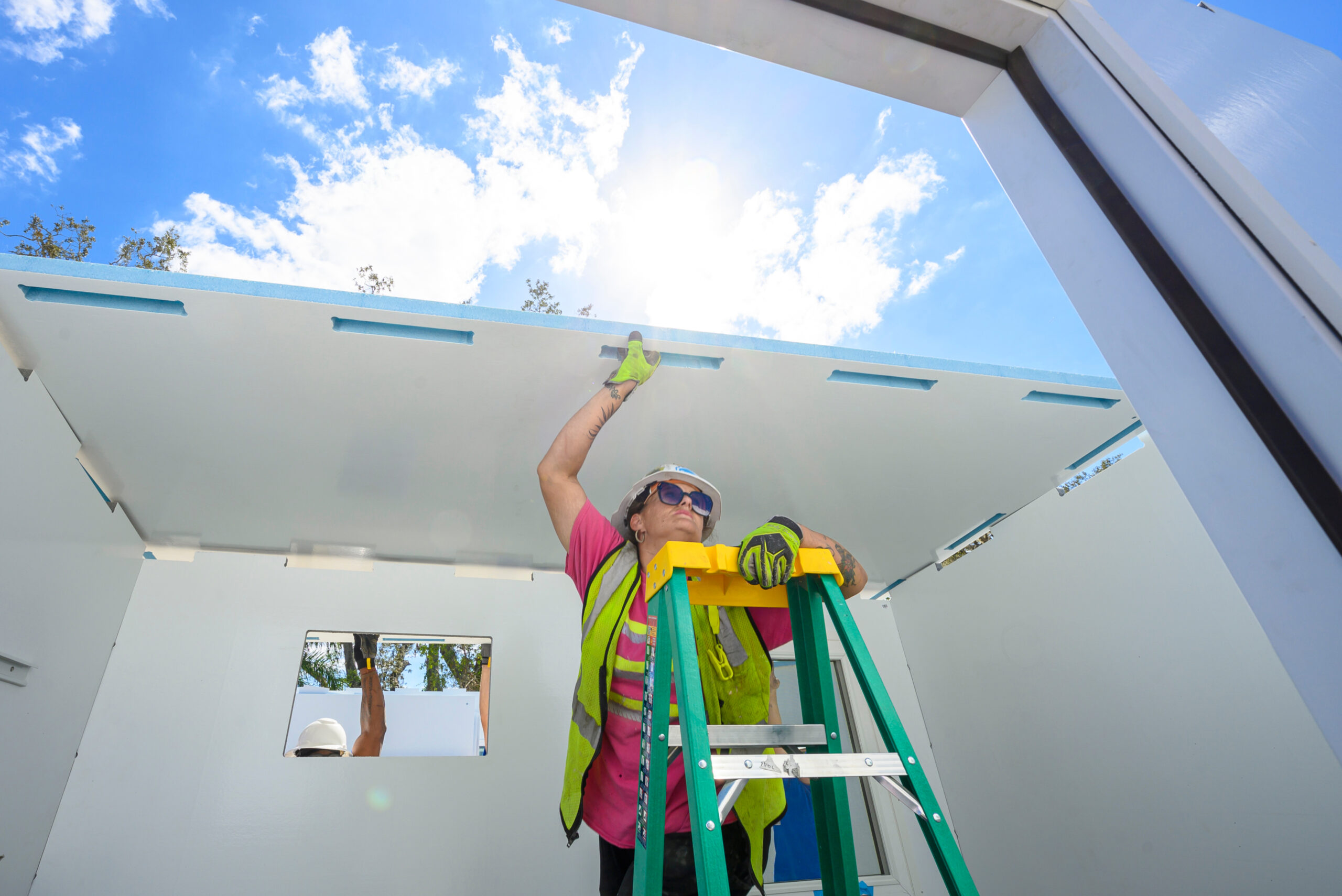Myth: Addiction causes homelessness
June 23, 2023

Addiction has become ingrained and unavoidable in the broader conversation about homelessness. It is common to blame drug and alcohol use on why people lose their housing, even with abundant data suggesting otherwise: a study found that while 91% of the general public believed drug use to be the cause of homelessness in young populations, only 10% of participants with lived experience said this was accurate.
While substance use is undoubtedly a prevalent issue for many people experiencing homelessness, it is rarely the sole factor leading to a loss of housing—in fact, studies have proven that dependencies on drugs, alcohol, or both are not direct causes of homelessness.
The order of causation is often confused and oversimplified. In reality, when people lose their housing due to financial hardship or relationship issues, the harsh environment of living unsheltered can act as a catalyst to developing substance use disorder.
This disconnect between perception and reality is due to the broad stigmatization of substance use, and a troubling lack of understanding around social determinants of health (SDOH), intergenerational poverty, insufficient mental health services, mass incarceration, and systemically racist practices like redlining.
To truly help our unhoused neighbors, it’s essential to challenge the mischaracterization and stigma of substance use and examine the root causes of homelessness—which go far beyond addiction and are deeply entrenched in political and socioeconomic systems.
The role of racism and marginalization
An overwhelming amount of evidence clearly illustrates how marginalized social groups (such as people of color, indigenous people, and the LGBTQIA+ community) experience homelessness at disproportionately high rates.
Even though Black people make up 13% of our country’s population, they comprise 40% of homeless Americans. This can be traced back to structurally racist practices like redlining and blockbusting, which rose to prominence with the National Housing Act of 1934. These effectively prohibited potential homebuyers who were Black from securing loans or mortgages and artificially inflated property values after driving people out of historically white neighborhoods, and, in turn, caused intergenerational poverty that still resonates today.
Disparately high rates of homelessness caused by historical traumas are also felt by indigenous communities including American Indians and Alaska Natives. These populations face unique and lasting challenges that stem from legislation signed into law nearly 200 years ago: a mistrust in the federal government, a severe lack of funding for affordable housing, and skewed data that leads to inequitable resources are just a few examples that contribute to imbalanced rates of unsheltered homelessness in indigenous communities.
Discrimination also has profound effects on the LGBTQIA+ community. Family rejection due to sexual orientation or gender identity and physical, emotional, and sexual abuse are common experiences that lead to feelings of ostracization and abandonment. A 2021 study shows the effects of this marginalization: 17% of lesbian, gay, and bisexual adults and 30% of transgender adults experienced homelessness at some point in their lives, compared to 6% of the U.S. population. Younger people are even more vulnerable. In 2022, 28% of LGBTQIA+ youth reported experiencing homelessness or housing instability.
The revolving door of incarceration and homelessness
Beginning with sweeping, punitive “tough on crime” laws that were enacted in the 1970s in response to an uptick in violent crime, the U.S. is still today one of the world’s largest jailers. Even after statistics of these targeted heinous crimes decreased, the prison system incarcerated more and more people for committing public order crimes like drug use and possession, prostitution, public drinking, gambling, and vagrancy—and gave them longer sentences. Since 1980, the number of people incarcerated for such crimes has risen 1,049%.
These minor offenses are therefore seen as just cause for incarceration. Once a person exits the prison system, it is remarkably difficult to rebuild a life: jobs and housing will routinely deny applications, which is why formerly incarcerated people are nearly 10 times more likely to experience homelessness than the general public. This vicious cycle is maintained by laws that criminalize homelessness like sleeping in public, panhandling, and public urination.
The U.S. prison system causes and perpetuates homelessness by focusing on retributive measures rather than reform and giving people a fair chance at a new life.
Stigmatization and sidelining of mental health services
Deinstitutionalization, or the process of closing public psychiatric facilities and moving patients to a model of community health services, is a core part of the discussion around the link between mental illness and homelessness. Although it is inaccurate to attribute this as the sole factor why people living with mental illness end up on the streets, there is no debate that the poor planning in discharging these patients and the dearth of needed supportive services play a significant role.
As of 2022, 21.1% of people experiencing homelessness live with mental illness. For people with conditions like schizophrenia, bipolar disorder, PTSD, and neurodevelopmental issues, having access to stable housing and social services is key—but with an acute scarcity of available affordable housing and lack of publicly funded mental health resources and outreach workers, they are often discharged back onto the streets without regard after visits to the ER or being held in police custody.
Ultimately, there are various historical and societal reasons why people experience homelessness, and addiction is simply one issue closely tied to the trauma of living unsheltered. To end the homelessness crisis, we must address these root causes, build a reliable ecosystem of support, and offer compassion and understanding to those who need help—because every person deserves access to a stable and permanent place to call home.


